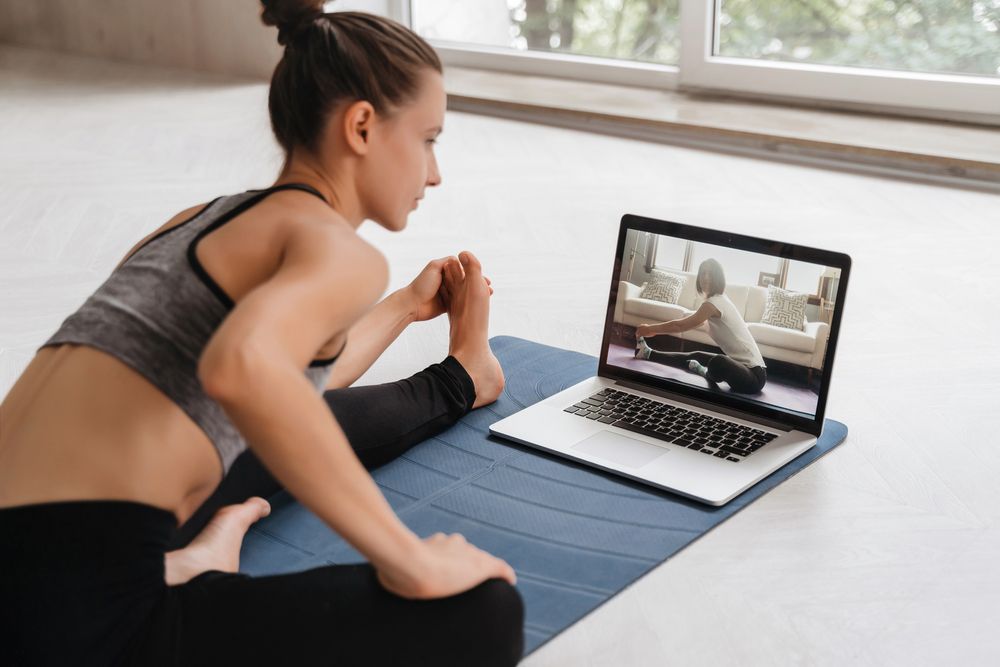Online fitness classes have exploded in popularity over the past few years, offering flexibility, variety, and convenience to people looking to get in shape from the comfort of their homes. With just a few clicks, you can access a wide range of workouts—from yoga and pilates to strength training and HIIT—whenever you want. However, like anything else, there are both advantages and disadvantages to using online fitness classes. In this article, we’ll explore the pros and cons to help you decide if virtual workouts are right for you.
Pros of Online Fitness Classes
1. Convenience and Flexibility
One of the biggest selling points of online fitness classes is the convenience they offer. You can work out anytime and anywhere, as long as you have a reliable internet connection. Whether you’re squeezing in a quick workout before work, during lunch, or late at night, online classes allow you to fit exercise into your schedule without worrying about gym hours or commuting.
- No Need to Travel: You can join classes without the need to drive to the gym or studio, saving you time and money.
- Access to a Variety of Workouts: You can try different styles of fitness (yoga, strength training, cycling, etc.) without having to commit to one particular type of gym membership.
2. Cost-Effectiveness
In-person fitness classes and gym memberships can be expensive, especially when you factor in travel, equipment, and other expenses. Online fitness classes are often much more affordable. Many platforms offer subscription-based models with access to thousands of workouts, which can save you a significant amount compared to paying for individual in-person classes.
- Affordable Subscription Plans: Most online fitness platforms offer monthly or annual subscriptions that are more affordable than paying for each class or a gym membership.
- Free Classes: Many websites and apps offer a variety of free workouts, so you can get started without committing any money upfront.
3. Variety and Wide Selection
Online fitness platforms give you access to an incredible variety of workouts that can cater to any fitness level or goal. Whether you’re into high-intensity interval training (HIIT), yoga, dance, or strength training, there’s likely an online class that fits your needs.
- Multiple Options: You can choose from live-streamed classes or on-demand content, and many platforms release new classes regularly.
- Access to Experts and Celebrities: Some fitness platforms offer classes taught by well-known instructors or fitness celebrities who you might not have access to in-person.
4. Privacy and Comfort
For those who feel intimidated or self-conscious at the gym, online fitness classes offer a level of privacy and comfort. You can work out in your own space, wear whatever you want, and not worry about others watching you.
- No Judgement Zone: It’s easier to feel relaxed and focused on your workout when you’re in the comfort of your own home.
- Personalized Space: You can create a workout environment that’s tailored to your needs, whether that’s a quiet room, your living room, or even outside.
5. Community and Motivation
While you may not be physically present in a group workout, many online fitness platforms have built-in communities where you can engage with fellow participants, share progress, and find motivation. Many classes also have live elements, where you can interact with the instructor or participate in real-time challenges.
- Social Support: Many platforms offer virtual communities where you can communicate with others, ask questions, and stay motivated.
- Live Classes and Challenges: Some services offer live classes, virtual challenges, and leaderboard features that can make you feel more connected and motivated.

Cons of Online Fitness Classes
1. Lack of Personalization
While online fitness classes are convenient, they often don’t offer the personalized attention that you might receive in a one-on-one session with a personal trainer. If you’re new to fitness or have specific health concerns, the lack of customized feedback can make it more difficult to ensure you’re performing exercises correctly and safely.
- No Direct Instructor Feedback: You may not receive immediate corrections on your form, which can increase the risk of injury.
- One-Size-Fits-All: Many online programs follow a set routine and don’t take into account your unique fitness level, goals, or limitations.
2. Motivation Challenges
Without the in-person accountability and group atmosphere of a gym, it can be easy to lose motivation or skip workouts. While some people thrive with self-discipline, others may struggle to stay consistent without a structured environment or the encouragement of an instructor or group.
- Less Accountability: Working out alone can feel isolating, and it may be easier to skip a class or stop halfway through.
- Limited Social Interaction: For those who enjoy the social aspect of working out, online classes may feel less engaging compared to a gym or group setting.
3. Technical Issues
Since online fitness classes rely on technology, there’s always the potential for technical issues. Poor internet connections, device malfunctions, or streaming problems can disrupt your workout and cause frustration. This is particularly true for live classes where you may not be able to rewatch them.
- Streaming Problems: Poor internet speed or a weak connection can lead to buffering or interruptions during your workout.
- Device Compatibility: Some platforms may not be compatible with all devices, limiting your options if you don’t have the right equipment.
4. Space and Equipment Limitations
While some online fitness classes require little to no equipment, others may need specific items like dumbbells, resistance bands, or a yoga mat. If you don’t have the necessary equipment or space to perform certain exercises, your workout may be limited.
- Lack of Proper Equipment: Many classes require specific equipment, and if you don’t have access to it, you may not be able to fully participate.
- Space Constraints: Working out at home can also mean dealing with limited space. If you’re in a small apartment or don’t have room for movement, it can be difficult to perform certain exercises effectively.
5. Distractions
Exercising at home can be filled with distractions, especially if you live with others or have a busy household. Unlike the focused environment of a gym, there might be interruptions that take away from your workout time or hinder your focus.
- Home Environment Distractions: Pets, children, household chores, and other distractions can interfere with your ability to focus and complete a workout.
- Lack of Structure: With no scheduled gym classes or personal trainer, it can be easy to lose track of your fitness routine or neglect your goals.
Online fitness classes offer numerous benefits, including convenience, affordability, and variety. For those who value flexibility, privacy, and the ability to explore different types of workouts, they can be an excellent option. However, there are also some drawbacks, including the lack of personalized instruction, potential motivation struggles, and technical issues.
Ultimately, the decision to try online fitness classes depends on your personal goals, preferences, and commitment. If you enjoy working out at your own pace and in the comfort of your own home, online fitness classes could be the perfect fit. But if you require more personalized attention or thrive in a social, group setting, you may want to consider a combination of online and in-person options for the best results.





